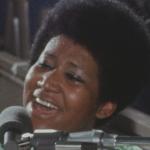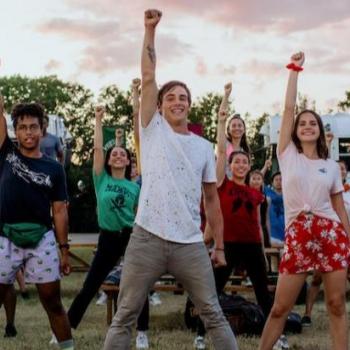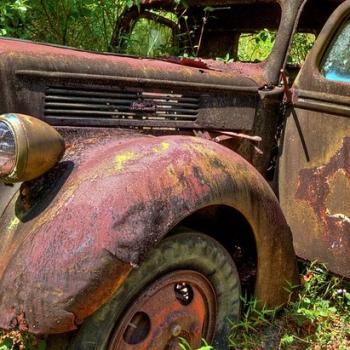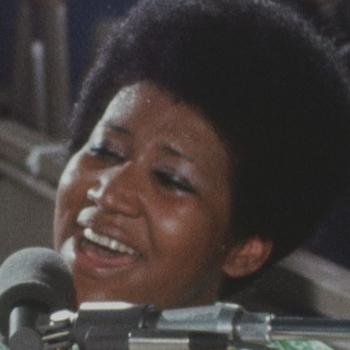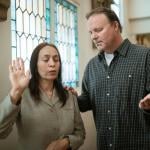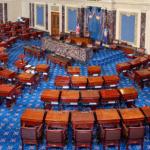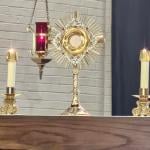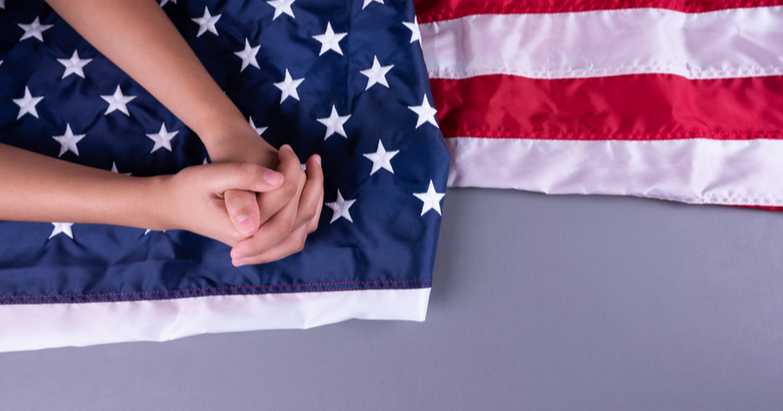
In high school, I could not wait for each year’s See You at the Pole. It was on my calendar before the academic year started. Weeks before, I hung up flyers urging fellow Christian classmates to join me early on a Wednesday morning and pray for our peers and teachers.
For four years, I woke up early on a September morning and stood outside my high school, hands interlocked with anywhere from four to twenty classmates, and prayed while our fellow students watched. My youth group often had a rally afterward where we shared stories about our experiences.
See You at the Pole, which is still an annual occurrence and happens on Sept. 22 this year, was a major part of my spiritual formation. In recent years, I’ve reflected on both the positive impact it’s had on me, as well as the negative side effects that stemmed from it.
See You at the Pole 101
According to its website, See You at the Pole began 31 years ago when 10 Texas students gathered at their school’s flagpole to pray. There was nothing special about the flagpole; it was just a gathering spot where everyone could find each other and pray together.
Thirty years later, millions of students around the United States head out to their schools’ flagpole to pray at 7 a.m. on the fourth Wednesday of September. The movement includes youth groups in nearly every state, and it’s supported by numerous Christian organizations. Christian music supergroup For King and Country hosted this year’s planning video for students. Its website includes tips for managing a social media campaign for the event, and post-event rallies are often large enough to fill theaters. See You at the Pole is now a major Christian culture event, with all the complications that arise whenever a small moment becomes a major movement.
Prayer and community
I want to stress up front that I think See You at the Pole’s intentions are largely good. Prayer is not something that comes naturally to me. I struggle with it and, like many, I tend to pray for my own needs. See You at the Pole provided practice in praying for others, including teachers who were in authority and classmates I may not even know. It wasn’t simply that they would find Jesus. It was prayers for their well-being, comfort, safety and success. I’ve heard it said that it’s hard to dislike someone you pray for. Those mornings around the flagpole helped me to see peers and authority figures as fellow image bearers who may have struggles I was unaware of.
See You at the Pole was also an opportunity to pray in community. Very few members of my youth group attended my church and as a fairly sheltered individual, I often spent the early weeks of September wondering whether I was the only believer in my school. I often arrived at the pole surprised to see a familiar face. It reminded me that I wasn’t alone, and gave hope for new relationships throughout the academic year.
Praying for and with others is good. I will always encourage young people to find a way to practice prayer and community. That said, my experience revealed two temptations that this event often creates.
‘Praying to the flagpole’
In the Sermon on the Mount, Jesus cautions his followers not to be like the Pharisees, who made pageantry out of prayer and used gaudy gestures and flowery wording to showcase their piety. It’s not a prohibition of public prayer, but a warning to check our motives and be mindful of our actions. Prayer is an opportunity for humbling ourselves; it’s not a performance.
I would like to say my motives were pure when I went to the flagpole. I believe that I went out there truly wanting to ask God’s blessing on my classmates and lift up their needs. But it’s also true that I made sure my classmates saw me. I got a thrill when someone asked me why I was “praying to the flagpole.” I wanted them to know I was praying for them.
Of course, what I really wanted was to show how much better I was than them. I was a self-righteous prick in high school, and I wanted them to know I was praying for God’s mercy on them for drinking, swearing and having sex. I wanted my Christian classmates to hear my prayers and see just how emotional I was, how much I cared for these sinners. While I had some earnest motives, I’m also well aware how much my presence was part of a plan to brand myself as a God-fearing, Bible-believing Christian who was set apart from my heathen classmates. In succumbing to that temptation, I was a Pharisee before I even had a driver’s license.
Persecution complex
The other temptation was to be distracted by reminding ourselves how much persecution we risked by participating in See You at the Pole. We saw this not just as a place for prayer but as a battleground. We steeled ourselves for pushback from school administrators who wanted to shut down prayer at school. We braced for taunts from our classmates. Our church leaders warned that we would be ridiculed for daring to live out our faith; they invited us back to youth group that evening to share our tales of persecution.
Of course, other than some typical high school jeers, we never really encountered much resistance. Our administrators were happy to let us pray at the flagpole, so long as we weren’t preaching or stirring up trouble. Our classmates were sometimes confused by what we were doing, but most of my explanations were met with “huh, that’s cool.” It was instilled in me that non-believers were my enemies, that I was entering a battlefield every time I wasn’t on church grounds. But maybe the worst it ever got was having a random spitball lobbed at us.
The bigger problem was the persecution complex itself. Prayer, as I said before, allows us to see others as fellow image bearers, people loved by God who we should desire the best for. Telling ourselves that those who don’t share our beliefs are our enemies has the opposite effect; it makes us suspicious of those we’re supposed to love. And the teaching that all good Christians will face persecution, which our youth leaders told us in the days leading up to the event, also created problems. We wanted our prayer to be a theatrical means to rile up their hatred. It was a prop and a protest, not a request for God’s loving intercession. When we didn’t face that persecution, we often left confused; were we good enough Christians if people weren’t angered by our display of faith?
Praying for the pray-ers
I don’t want to disparage See You at the Pole. Part of what I want to accomplish at the Jesus Junkyard is to examine Christian culture and see what is treasure and what is trash. I don’t think See You at the Pole is trash, but I do think it’s got some rust and dirt on it that need to be cleaned up before we can truly appreciate it.
I hope there are millions of students who go out to pray for their classmates next Wednesday. My prayer for those students is that God uses this time to instill love for their classmates, teachers and administrators. I pray that their prayer is truly for their good and that, in many ways, God uses that moment to grow them spiritually, not just their classmates who may not share their beliefs. I hope they find a community of loving fellow believers who they can come together with to grow in Christ and serve their fellow students.
I pray they will take Christ’s warnings about public prayer seriously and be mindful of their motives and their susceptibility to Pharisee-ism. I also hope that thoughts or fears of persecution are far from them. That they are not distracted by thoughts of who might be against them but rather that they pray that God opens friendships and gives them a deep love for their peers. God can use See You at the Pole for great change; we just have to be aware of the temptations that can distract us.


